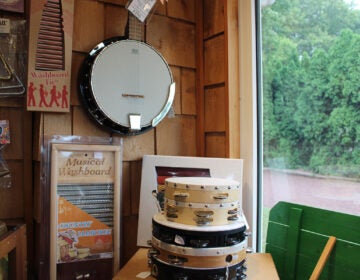Construction begins for the new African American Museum of Bucks County
An 18th-century farmhouse near Langhorne is being renovated into Bucks County’s only Black museum.
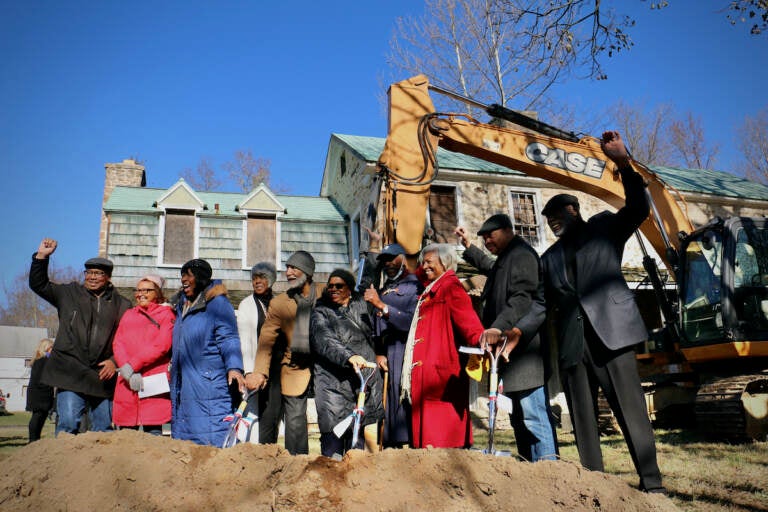
Members of the Board of the African American Museum of Bucks County celebrate at the groundbreaking for the museum at Boone Farm in Middletown Township. (Emma Lee/WHYY)
Bucks County leaders broke ground Wednesday on a planned African American museum near Langhorne, Pennsylvania. Work has begun on a $3.7 million renovation project to turn an 18th-century stone farmhouse into one of the few Black-centered historic attractions in the entire county.
When it opens, likely in 2024, the African American Museum of Bucks County will be the only African American museum in all four of the counties surrounding Philadelphia.
“I’m excited,” said Linda Salley, the museum’s executive director. “It’s a long time coming.”
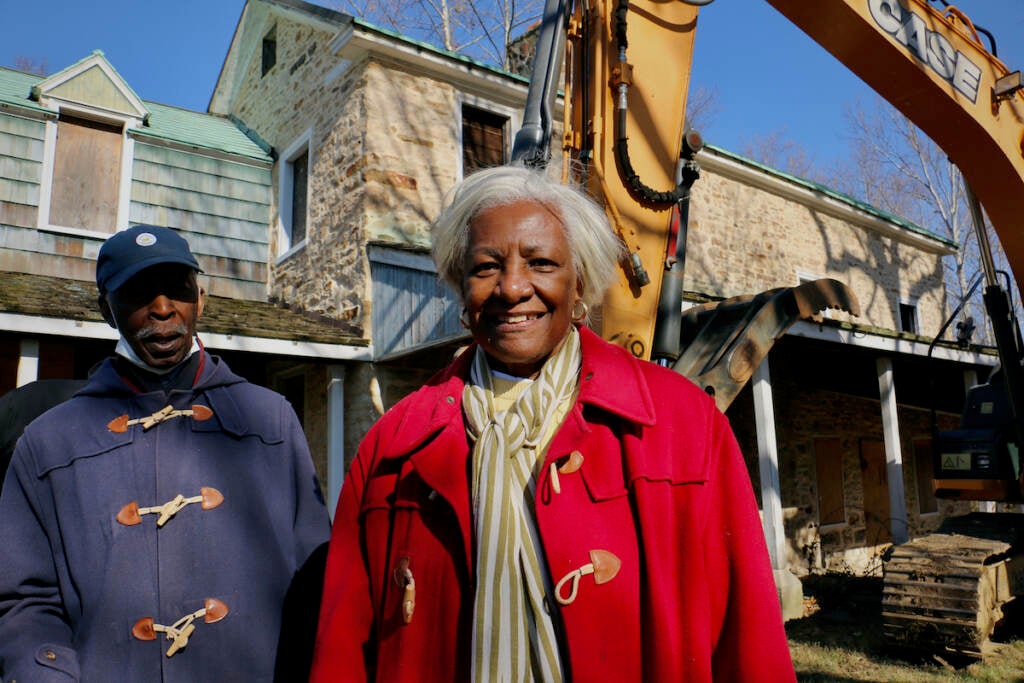
The new museum’s three-story, 4,000-square-foot home along Langhorne-Newtown Road in Middletown Township was once the historic Boone Farm. The property is now owned by the county. With its boarded-up windows and crumbling porch, it has been dilapidated for as long as most residents can remember.
“I have been driving past it since I was a candy striper at St. Mary [Medical Center] in 1974,” said Diane Ellis-Marseglia, a county commissioner. “As a Middletown supervisor I had a lot of people complain: ‘What are you going to do about this building?’”
Around 2018, Ellis-Marseglia found a match in the African American Museum of Bucks County, an independent nonprofit established in 2014. It is based in nearby Langhorne Manor and has always operated as a nomadic exhibitor.
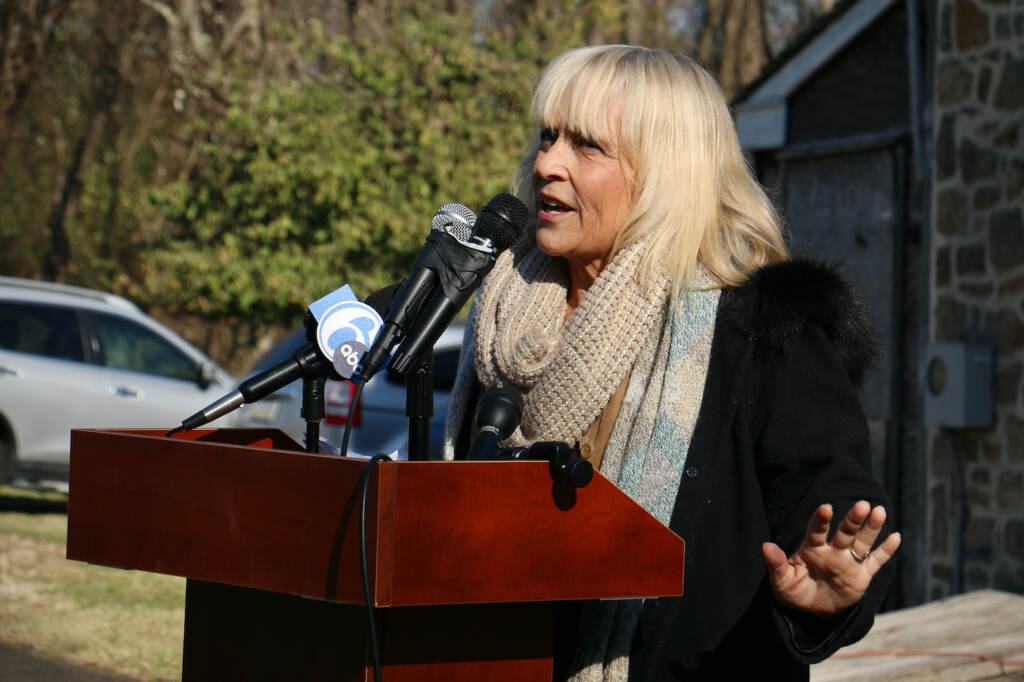
Salley said the museum will tell the history of Bucks County, from the Lenni Lenape people, through Black slavery and emancipation, into the Great Migration of the 20th century.
“You cannot talk about this land and not talk about the Lenape Indians, because it belonged to them. They gave this land to William Penn,” she said. “We have to start from the beginning and bring it to the present, because that’s the problem: The story has never been told. Bucks County holds many beautiful museums. I’ve been to them all. But not one of them tell our story.”
In 2020, Bucks County gave the Boone Farm property to the Museum for a $1 lease, but the COVID pandemic slowed the progress of the project. Together, the museum and the county are raising the renovation costs from public funds and private donations, including gifts from Parx Casino and Sesame Place. At the groundbreaking ceremony on Wednesday, state Rep. Frank Ferry announced that the state will contribute $250,000 to the project.
The Boone Farm is not just an available property ripe for renovation: It played a role in the history of African Americans of Bucks County.
While teaching a quilting class about 20 years ago in Bristol, Salley discovered that some of her older students could trace their families back to Boone Farm during the Great Migration of the early 20th century, when many Black people from the South moved north to find work.
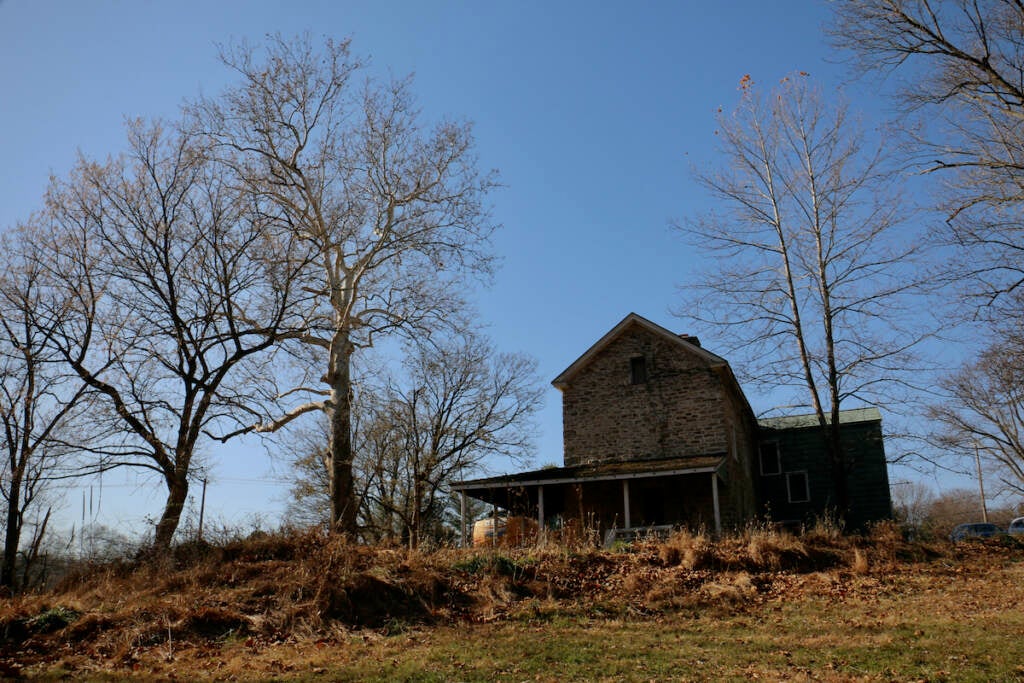
“One day, one of the ladies said, ‘You know how we got here?’ I said, ‘No, I don’t,’” Salley recalled. “She says, ‘We migrated from Mississippi. We came out in the middle of the night and there was a brochure or a flier or whatever they had back then. We picked it up and said to the family members, ‘They’re hiring at Boone Farm.’”
Salley had never heard of Boone Farm before and didn’t know where it was.
“I said, ‘Really?’ ‘Yeah, we worked Boone Farm, and on that farm we made enough money. No one took our money. We saved it and we bought our houses, and we actually sent our kids to college.’”
Many of the families who worked at Boone Farm later established themselves permanently in Bucks County.
Now, every window of the Boone farmhouse is broken and the doors are sealed with plywood. Buck County’s project officer Bernard Griggs said the interior is completely gutted, with no intact electrical, plumbing, or climate control systems. Part of the renovation is to put on new windows and doors, replace the roof, make structural repairs, and install utility systems.
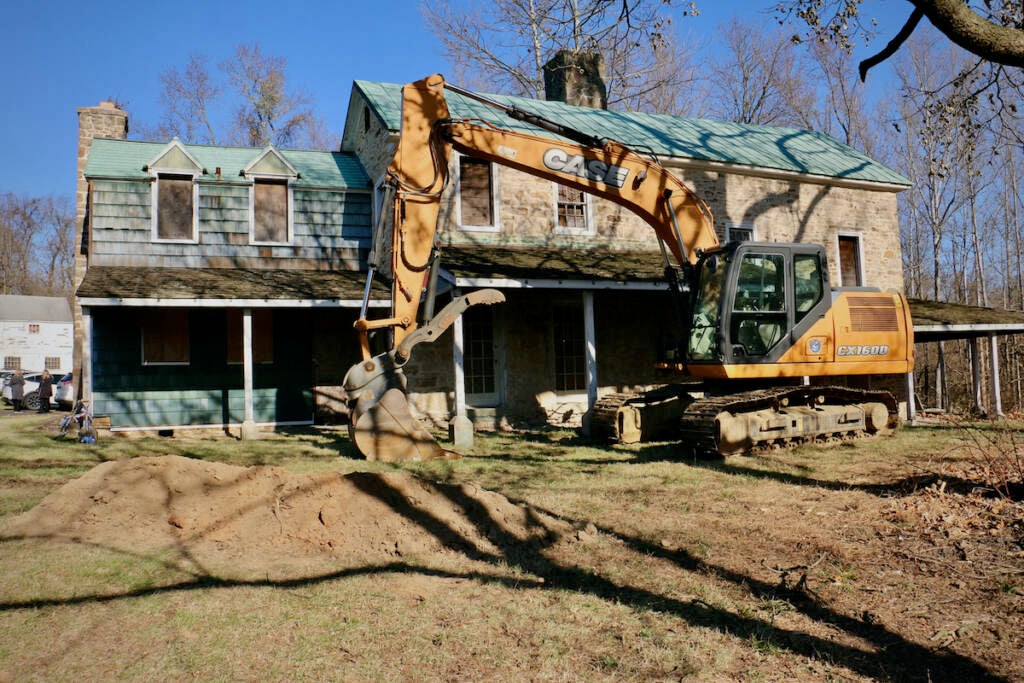
The landscape around the building will be partially paved for a parking lot, cleared of dead and dying trees, and renovated for stormwater management.
“The building also gets an elevator, because it’s going to be used for public use. By code it needs to have an elevator,” Griggs said. “As the owner of the project, we’ve committed to do a complete core and shell construction, all the groundwork, and all that kind of stuff, and then essentially turn over a white box to the museum folks for them to do their own build-out of display cases and interior finishes.”
Landscape work begins immediately, and house renovations are expected to begin early next year. Griggs said the county will likely work on the property for about a year before it hands the keys to the museum.
WHYY is your source for fact-based, in-depth journalism and information. As a nonprofit organization, we rely on financial support from readers like you. Please give today.




